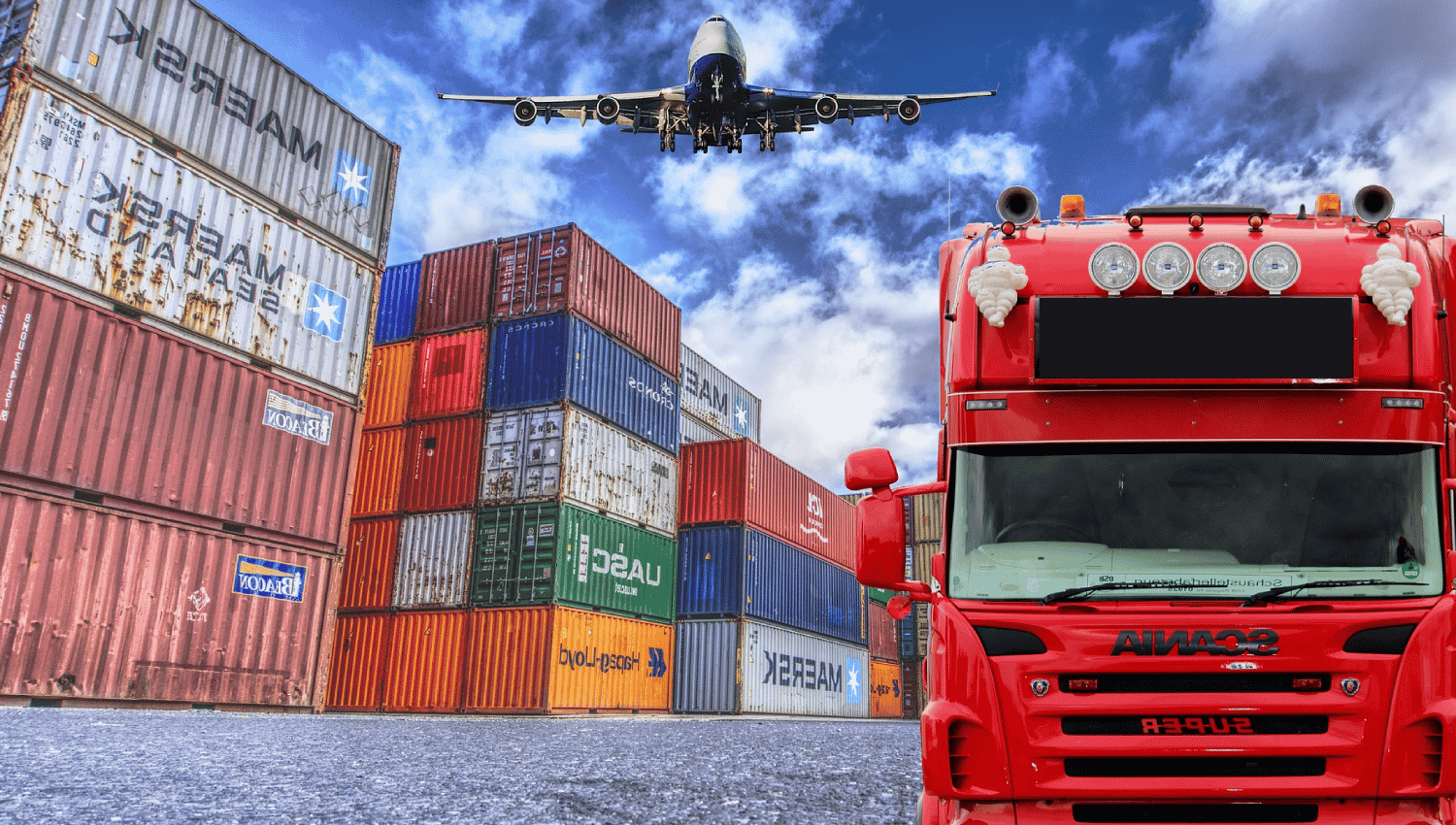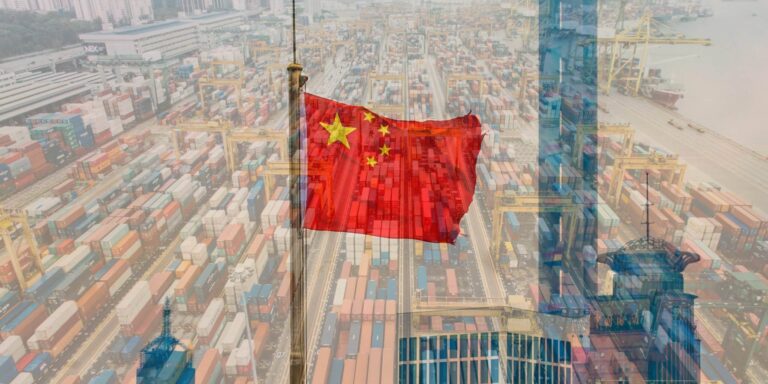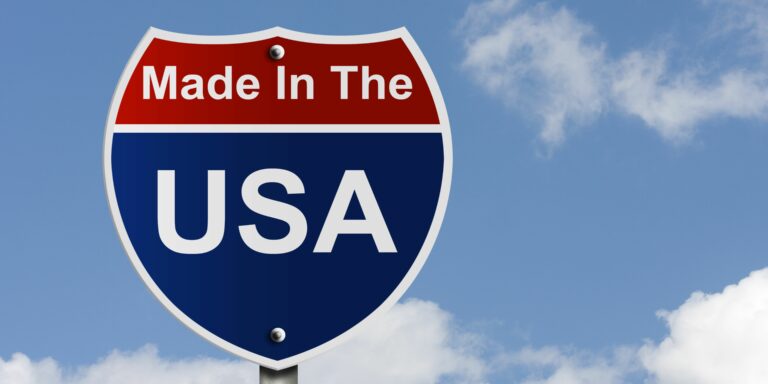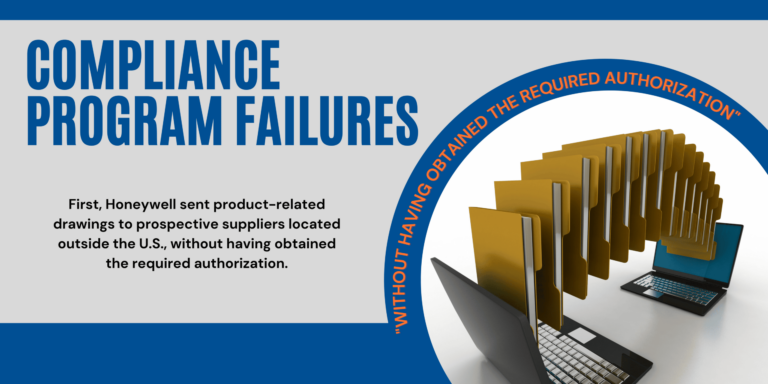Chaos is Good for 3PL Providers
By Chris Dupin
It’s a good time for 3PLs when capacity is tight and supply chains are speeding up.
That’s 10 percent of global logistics costs, according to consultants Armstrong & Associates, and a leap from the $802 billion recorded in 2016.
Armstrong & Associates said in 2017, gross 3PL revenues in the United States increased 10.5 percent year-over-year to reach $184.3 billion and are expected to be close to $200 billion this year.
“A 3PL’s job is to solve chaos for their customers,” said Kevin Sterling, a transportation analyst with Seaport Global Securities.
When supply and demand are in balance, as they were in 2015 and 2016, it’s not as lucrative an environment for 3PLs because shippers are more inclined to say, “Why do I need a 3PL? I can just go to an asset-based carrier,” Sterling said.
But this has been a good year for the 3PL business because “truck capacity is tight, there’s intermodal service issues, intermodal capacity is tight, supply chains are speeding up to keep up with the Amazons of the world,” he said.
Sterling did note 3PLs also can do well when there is an excess of capacity and truckers turn to them to help find freight.
In the tight freight market this summer, 3PLs had the “ability to thrive because shippers need access to capacity,” agreed Mark Christos, vice president of transportation at Matson Logistics.
The average truckload carrier has less than 50 trucks, but a 3PL like Matson deals with 20,000 motor carriers and can help shippers locate the capacity they need.
The ocean shipping business also has had a roller-coaster year, with overcapacity in the first half followed by sharply higher rates and capacity withdrawals so severe that some shippers in Asia found U.S.-bound cargo being rolled to later voyages in the late summer.
With sharp increases in rates for domestic transport, “customers are feeling the pain of not having an effective network management program in place. They’re asking for help in visibility, automation, procurement, contract management and ultimately how do you optimize the entire network,” said Frank McGuigan, chief executive officer of Transplace, a non-asset 3PL based in Frisco, near Dallas.
“We don’t see 2019 being a layup year either,” he said. Even if not as strong as this year, the economy likely will remain strong, and “there are still some fundamental issues in the industry as it relates to drivers, capacity, etc. I don’t see fuel significantly dipping as well.”
A Diverse Industry
There are many companies in the 3PL business and they offer a variety of services. Some are more transportation oriented and some more canted toward the warehouse business. Some are purely domestic, and some have extensive international operations. Some are part of much larger organizations.
While most 3PLs are non-asset or asset light, others have substantial investment in assets. An example is XPO, which bought the less-than-truckload and full-truckload carrier Con-way in 2015. While XPO sold some of Con-way’s assets, notably its full-truckload business to TransForce, it said in August that today it owns 810 contract logistics facilities, 457 cross-docks, 16,000 truck tractors and 39,000 trailers, and 9,500 53-foot domestic containers and 5,000 chassis globally. Still, XPO said, “Our business model is asset light overall.”
Armstrong divides the U.S. 3PL business into five segments:
• Dedicated contract carriage — supplying tractors, drivers and management with trailers normally included;
• Domestic transportation management — non-asset-based value-added transportation management of shipments originating in and destined to North American points, usually performed in conjunction with freight brokerage;
• International transportation management — non-asset-based value-added international transportation management of shipments, usually performed in conjunction with freight forwarding;
• Value-added warehousing and distribution — providing contract warehousing or distribution center operations with value-added services;
• And contract software and systems.
Armstrong & Associates has created profiles of more than 580 3PLs for its database, and Evan Armstrong, its president, said about 70 percent are privately held. But he said there are many more — perhaps 8,000 to 9,000 3PLs — with warehousing operations.
The 2018 State of Logistics Report, authored this year by A.T. Kearney for the Council of Supply Chain Management Professionals, said that U.S. 3PLs are “poised for growth,” but that “shipper-3PL interactions continue to focus on short-term cost-cutting. While mutual mistrust prevents them from forging long-term strategic partnerships that would unlock greater growth for 3PLs.”
The report cautioned that “U.S. shippers that use 3PLs opportunistically and transactionally face steeper challenges in 2018 as capacity pressures in value added warehousing intensify.”
Consolidation
There has been a wave of mergers and acquisitions in the 3PL industry in recent years, but Armstrong said there has been a switch from “strategic acquisitions” such as XPO’s 2015 purchases of truckers Con-way and Norbert Dentressangle to more private equity investment in the industry.
Recently, he said, there has been interest by overseas investors in U.S. firms. He pointed to South Korean CJ Logistics’ purchase of DSC Logistics in June and Belgian postal service bpost’s purchase of Radial (formerly eBay Enterprise) at the end of 2017.
In September, Britain’s Royal Mail Plc purchased Dicom Canada from the Chicago-based private equity firm Wind Point Partners for $360 million in order to boost revenue from outside the U.K. for its general logistics systems unit. Dicom offers parcel, freight and logistic services. Wind Point did not sell Dicom’s U.S. operations.
As examples of private equity interest in the 3PL business, Armstrong pointed to deals in 2017 such as TPG Capital’s purchase of Transplace from Greenbriar Equity and Ridgemont Equity Partners’ purchase of Worldwide Express, which it then merged with Unishippers Global. In June, The Jordan Company acquired GlobalTranz Enterprises.
However, Armstrong said that private equity investors may be “looking for a platform to expand on. Once you have that private equity financing, there tends to be the need for strategic acquisitions to add value to the company.”
Transplace, for example, did seven acquisitions in seven years, the last in 2016, said McGuigan. “We will make at least one acquisition this year — we’ll probably have an announcement in October.
“The first question we ask ourselves when we’re buying a company is, ‘How can it help our shipping community?’”
For example, Transplace had a customs border management business for eight years, but its acquisition of Laser Ramos Gil in 2016 in effect tripled the size of that business, he said.
About 70 percent of Transplace’s business is domestic, but 30 percent is international, with the vast majority being in and out of Mexico and Canada.
“We have about $8 billion of freight running through our system,” said McGuigan. “Our shippers rely on us every single day to deploy technologies and processes to support them in the very inflationary freight network that the U.S., Canada and Mexico have seen this year.
“Customers in a market like this realize they don’t have the information they need to effectively navigate the market,” he said, pointing out that Transplace’s managed transportation customers use its logistics platform.
While about a fifth of its customer base are pure software-as-a-service customers, McGuigan said his company believes “the value proposition and speed to value generally is greater in the managed service versus the software as service.”
Brad Jacobs, chairman and CEO of XPO, said in a telephone call with securities analysts in August that his company has been looking at potential acquisitions for about a year, beginning with a “universe of about 250 targets” and is “now concentrating mainly on about a dozen ones, and we’re in different levels of discussions with them.”
Jacobs said a deal would have to be one that “will likely create immense shareholder value.”
“Different World”
Recently some large container shipping companies have expressed increased interest in the logistics business. A.P. Møller – Maersk’s Damco freight forwarder and supply chain management company is listed as the 32nd-largest 3PL on Armstrong’s list of the 50 largest global 3PLs, and Maersk has announced a “strategy to become a global integrator of container logistics offering end-to-end solutions.”
In May, CMA CGM said it had acquired a 25 percent stake in CEVA Logistics and in January, NYK acquired the remaining 40.4 percent of Yusen Logistics it did not already own. (CEVA and Yusen are number 10 and 24 on the Armstrong list of largest 3PLs, respectively.)
Several liner companies have had logistics subsidiaries only to sell them after several years. For example, before APL was sold to CMA CGM in 2017, Neptune Orient Line sold its APL Logistics subsidiary to Japan’s Kintetsu World Express in 2015. Horizon Lines discontinued its 3PL operation in 2011 prior to being broken up and sold.
Armstrong thinks it makes sense for liner companies “to diversify out of being a commodity subcontracted player to try to be more of a solutions provider and really control the customer relationship, control more of the customer spend on logistics. It’s pretty hard to control a lot of the customer spend if you’re just an ocean carrier.”
But combining a liner company and a 3PL could be difficult, he said.
“They’re different worlds and it’s kind of like on the domestic side you tend to have guys who are transportation people and then you have people who are warehousing people. If you grow up on one side of the fence, you don’t do as well on the other,” said Armstrong. “You kind of see the same thing on the ocean shipping side as well. You have to make sure that if you do, that you staff it with the right management team and really let them operate and try not to confine them to being just a feeder service for the ocean carrier or something like that.”
A carrier that has had success with its logistics business is Matson. Matson Logistic’s revenue grew 18.6 percent last year and operating income was up 73 percent, in part due to the full-year inclusion of Span Alaska, which it acquired in 2016.
Like many 3PLs, Matson Logistics offers an array of services — trucking (truckload, less-than-truckload and intermodal), freight forwarding and supply chain solutions including inbound purchase order management, customs brokerage and visibility, as well as warehousing. Matson has nearly 600,000 square feet of warehouse space in Oakland, Calif., and is the exclusive operator of its Foreign-Trade Zone. It also operates a 1 million-square-foot warehouse in Savannah, Ga.
“Backbone and Focus”
APL Logistics’ roots are in the ocean shipping business, and Bocheng Shen, director of ocean products, said, “The whole backbone and focus has been on consolidating, deconsolidating, purchase order management. We focused ourselves, defined ourselves as a solutions company with technology, track-and-tracing visibility and so forth. Freight — in my case, ocean freight — is part of the solution that we provide to our customers.”
The company’s largest customers are big retailers that mainly do business directly with carriers.
Rather than compete with a big forwarder like Kuehne + Nagel, APL Logistics competes in niche markets where it can provide solutions, such as OceanGuaranteed, which offers day definite service and transit times that are up to 30 percent faster than standard ocean or intermodal moves, he said.
While this service began with APL, it also works with other carriers such as Matson.
The company has expanded its guaranteed services to include intermodal service from Los Angeles and Long Beach to Chicago and other cities such as Memphis, Kansas City, Dallas and Atlanta.
Shen explained that the OceanGuaranteed service commands a premium price, and the less-than-container-load shipments are priced in dollars per kilo like airfreight because it is actually targeted to air freight shippers.
The APL Logistics business complements Kintetsu, which has a larger focus on airfreight, and freight forwarders.
Armstrong said international transportation management has benefited from tight air freight capacity due to the global growth in e-commerce and an overall strengthening of global economies, with gross revenues in this segment of the 3PL industry increasing 10.5 percent in 2017.
Shen said the most important trend he is seeing today in the 3PL business is digitalization — the use of platforms to track cargo, tracking the status of shipments even to the SKU number and providing that kind of service integrated into the customer’s own system.
Matson’s Christos agreed that over the past year, the ability to provide shippers with visibility as to where their shipments are is increasingly a requirement by customers if 3PLs are to win business.
The requirement by the Federal Motor Carrier Safety Administration that truckers install electronic logging devices on their tractors has had the benefit of making it easier for 3PLs to trace and track shipments.
However, both the requirement for ELDs and the more restrictive hours of service rules for truckers have created challenges for shippers and 3PLs, especially in “tweener lanes” of 200 to 500 miles where it can be difficult to complete a trip and get a truck unloaded or loaded without violating HOS rules. That’s driven up rates on some tweener routes.
This can be particularly a problem in the full truckload market if a move is not a drop and hook or if a warehouse is not efficient and makes a trucker wait for a long time before freight is unloaded. It is less of an issue in the LTL market, noted Christos, since those carriers usually have scheduled routes.
In August, the FMCSA proposed changes that would make the HOS requirements more flexible, a move that was applauded by U.S. Rep. Eric Crawford, R-Ark., who had introduced similar legislation in June.
Noel Perry, the transportation economist who heads Transportation Futures, said the primary beneficiaries of the tight trucking market are carriers who own assets. But he said non-asset 3PLs also can benefit if their volumes are up.
Armstrong said in 2017, domestic transportation management gross revenues increased 16 percent over 2016 to $71.7 billion and net revenues were up 6.4 percent to $10.9 billion.
“The difference in growth rates reflects some gross profit margin compression due to quickly tightening truckload capacity in Q3 and Q4 of 2017,” he said, “requiring freight brokers to pay rate increases to carriers faster than they can negotiate increases with shippers.”
Armstrong also said, “Tight carrier capacity pushed shippers to dedicated contract carriers in 2017. Dedicated contract carriage revenues increased 10.2 percent over 2016 — significantly higher than its compound annual growth rate of 7 percent since 1995.”
While trucking capacity eased in the late summer, it remains tight, said Rob Hooper, the chief executive of Atlantic Logistics in Jacksonville, Fla.
While his company is largely focused on the flatbed trucking business, intermodal drayage is a growing part of his business, he said.
“We’re trying to expand capacity because of tightness on the trucking side,” he said. “I think it is an important component to be able to add to our repertoire to offer our customers when prices are too high and they’re not able to find capacity” in the trucking market.
Hooper noted that despite the presence of giants like XPO, Transplace and C.H. Robinson, the 3PL and trucking industry is very fragmented and has not followed the normal consolidation curve.
That very fragmentation of the trucking industry is “really why 3PLs exist,” he said.
“We’re a family-owned small business, and we are happy with that. That said, consolidation is going to continue,” he said. While his firm plans to grow organically by expanding its current operations, “we are also looking for other attractive partners that we can bring in to expand our operations.”
Cargo Matching
A host of companies have gotten funding in the cargo-matching business — matching the needs of truckers and companies that need to move freight. Armstrong said firms such as Transfix and Cargomatic have raised about $420 million from investors.
Other companies in this space include Convoy, Cargo Chief and Uber freight. An article on the Freightos website came up with a list of more than 10 firms in the sector.
Armstrong thinks what will be even more disruptive to the transportation management and international transportation management business is artificial intelligence, pointing to firms like Parade, based in San Mateo, Calif.
It “has a client who is a freight broker and every day they get emails from shippers that say, ‘We need trucks to cover loads in these lanes,’ and every day they get emails from carriers saying, ‘We have trucks available in these lanes.’ The artificial intelligence they’ve developed can read those emails, those unformatted emails, automatically put them into the freight broker’s transportation management system and then if the freight broker wants and enables it, the artificial intelligence can match the loads to the carriers and then trigger the TMS to tender the load to the carrier. So essentially you have the whole freight brokerage process being done in a lights-out environment,” Armstrong said.
“They’re starting with freight brokerage, and I imagine at some point they’ll start working on the freight-forwarding side.”
With the rise of e-commerce and increased consumer expectations, Jen Benson, vice president of customer success at 3PL Central, said 3PLs are seeing many customers switch from business-to-business (B2B) to business-to-consumer (B2C) companies.
At the same time, she said there is demand for 3PLs to do their work cheaper, faster and better. The 3PL industry is getting more complex, and 3PLs are having to absorb more risk at a time when customers have less tolerance for mistakes and higher quality expectations.
A survey by AlixPartners in March highlighted what it called the “Amazon effect,” that shippers want fast and free delivery. It found “the maximum delivery time the average shipper will accept has fallen to 4.5 days, down from 5.5 in 2012.
“The demand for speedy delivery requires retailers to store their inventories near consumers — not just to meet consumers’ expectations but also to keep a lid on their own freight costs,” AlixPartners said.
Hooper said his company has seen a decline in vehicle miles driven on shipments.
“I think logistics networks have gotten more efficient over the years, so you are having more near-sourcing of shipments. That’s a good thing. We always want to reduce carbon output, reduce vehicle miles driven.”
3PL Central said the commercial real estate company JLL expects developers to build about 225 million square feet of warehouse space in 2018, about the same as in 2017, and double the 10-year average of 120 million square feet between 2006 and 2016.
XPO Logistics said in August that it opened 16 last-mile hubs in the second quarter, giving it 71 in North America, and was on track for 85 ahead of the peak season.
AlixPartners noted the need for locating products near consumers makes planning and management more difficult, adding that, “Online sellers must master product segmentation” so that the most popular products are stored at distribution centers near customers to enable same- or next-day delivery. It added many retailers “will likely offer an extended assortment of SKUs to be sold online and picked up in store or leverage drop-ship partners to handle last-mile delivery.”
Speaking during a webinar, Benson said the good news is that 3PLs are becoming more important than ever.
Benson compared the trends roiling the 3PL business to those undergone by software providers a decade ago when they switched from “installed, expensive solutions” to “software as service.” That change meant a greater need to support and retain customers for a longer period of time in order for a piece of business to be profitable.
Benson suggested 3PLs may need to adjust their staffing as a result — hire more technologists or more seasoned employees, adjust their company culture and take a look at information technology.
Companies might be able to leverage existing software, Benson said. “Even if you have to spend a little bit of money on consulting or a little bit of money on some professional services, it is well worth it if you can maintain your investment over time.”
Article by Chris Dupin | American Shipper- See post previously published by American Shipper Magazine here.








